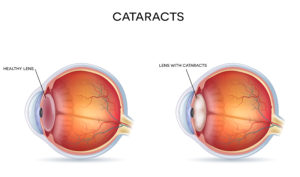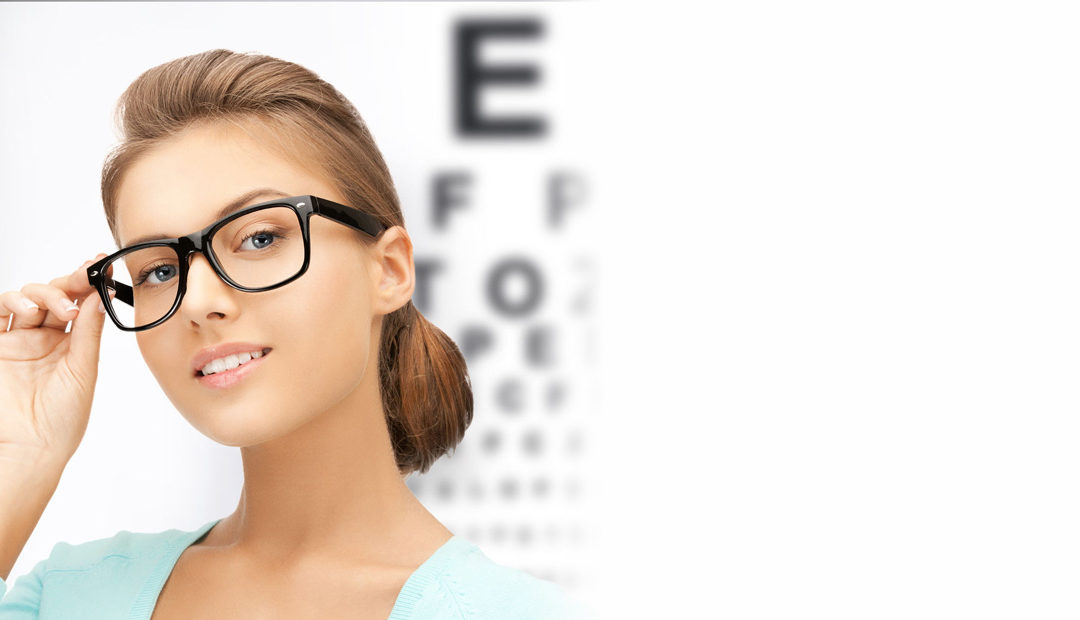It’s a fact of life- if you live long enough, you’ll get a cataract. Just like needing reading glasses or getting wrinkles, cataracts are an inevitable part of the aging process.
So what exactly is a cataract? Let’s start with some Eye Anatomy 101-
 We all have a natural lens inside our eye which helps us to focus. When we are young, our lens is clear or transparent. This clear lens allows an image to get through and reach the retina in the back of the eye
We all have a natural lens inside our eye which helps us to focus. When we are young, our lens is clear or transparent. This clear lens allows an image to get through and reach the retina in the back of the eye
However, as we age, the proteins within our natural lens become cloudy or opaque and no longer allow the image to get through clearly.
What comes next is glare or haloes, and eventually blurred vision. A cataract may affect far (distance) or up close (reading) vision or both. Here’s an example of how a cataract may affect your vision:

So, is there anything be done to prevent a cataract? That’s a billion dollar question- literally! Whoever develops a surefire way to prevent cataracts will be the Bill Gates of Ophthalmology. In the meantime, there are a few things you can do to try to slow the formation of cataracts.
Stay tuned for my next blog post on Prevention of Cataracts…




